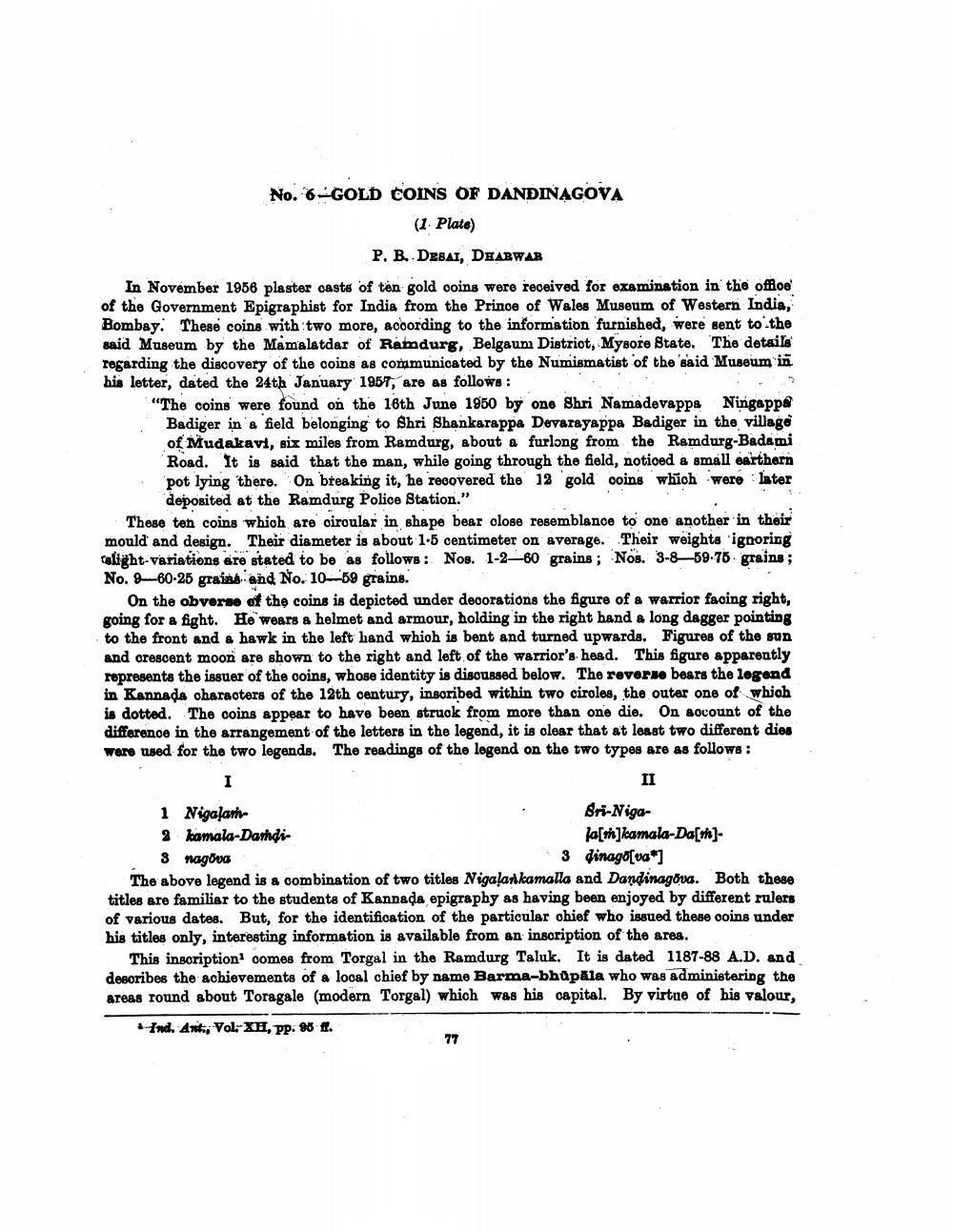________________
No. 6-GOLD COINS OF DANDINAGOVA
(1. Plate)
P. B. DESAI, DHARWAR
In November 1956 plaster casts of ten gold coins were received for examination in the office of the Government Epigraphist for India from the Prince of Wales Museum of Western India, Bombay. These coins with two more, according to the information furnished, were sent to the said Museum by the Mamalatdar of Ramdurg, Belgaum District, Mysore State. The details regarding the discovery of the coins as communicated by the Numismatist of the 'said Museum in his letter, dated the 24th January 1957, are as follows:
"The coins were found on the 16th June 1950 by one Shri Namadevappa Ningappa Badiger in a field belonging to Shri Shankarappa Devarayappa Badiger in the village of Mudakavi, six miles from Ramdurg, about a furlong from the Ramdurg-Badami Road. It is said that the man, while going through the field, noticed a small earthern pot lying there. On breaking it, he recovered the 12 gold coins which were later deposited at the Ramdurg Police Station."
These ten coins which are circular in shape bear close resemblance to one another in their mould and design. Their diameter is about 1-5 centimeter on average. Their weights ignoring talight variations are stated to be as follows: Nos. 1-2-60 grains; Nos. 3-8-59-75 grains; No. 9-60-25 grains and No. 10-59 grains.
On the obverse of the coins is depicted under decorations the figure of a warrior facing right, going for a fight. He wears a helmet and armour, holding in the right hand a long dagger pointing to the front and a hawk in the left hand which is bent and turned upwards. Figures of the sun and crescent moon are shown to the right and left of the warrior's head. This figure apparently represents the issuer of the coins, whose identity is discussed below. The reverse bears the legend in Kannada characters of the 12th century, inscribed within two circles, the outer one of which is dotted. The coins appear to have been struck from more than one die. On account of the difference in the arrangement of the letters in the legend, it is clear that at least two different dies were used for the two legends. The readings of the legend on the two types are as follows:
I
II
1 Nigalah
2 kamala-Damdi
Bri-NigaJa[th]kamala-Da[th]3 dinago[va*]
3 nagova
The above legend is a combination of two titles Nigalankamalla and Dandinagova. Both these titles are familiar to the students of Kannada epigraphy as having been enjoyed by different rulers of various dates. But, for the identification of the particular chief who issued these coins under his titles only, interesting information is available from an inscription of the area.
This inscription comes from Torgal in the Ramdurg Taluk. It is dated 1187-88 A.D. and describes the achievements of a local chief by name Barma-bhūpāla who was administering the areas round about Toragale (modern Torgal) which was his capital. By virtue of his valour,
Ind. Ant., Vol. XH, pp. 95 ff.
77




